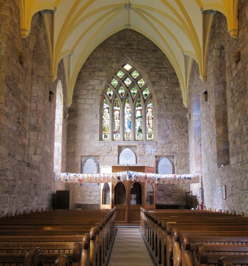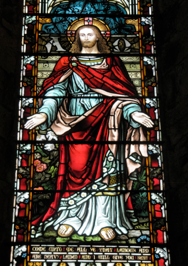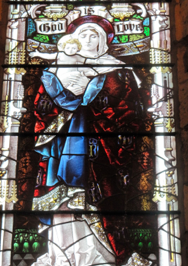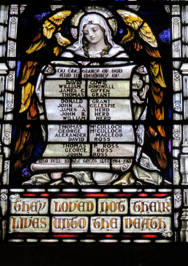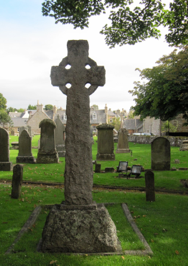dornoch cathedral
dornoch, sutherland
The north highlands
Scotland, United Kingdom
british isles
September 18, 2010


dornoch cathedral
dornoch, sutherland
The north highlands
Scotland, United Kingdom
british isles
September 18, 2010


Christianity was brought to Scotland in 540 by Finbarr now Saint Finbarr, founder of County Cork in Ireland. Dornoch Cathedral, built beginning in 1222 on the land where a 6th century church once stood, was funded by by Gilbert de Moravia, Bishop of Caithness. Related to the Earl of Moray and the Earl of Sutherland, Gilbert’s first decision, after his election to the Bishopric, was to move the seat of the diocese in Halkirk to Dornoch, since the two bishops who had preceded him were brutally murdered in Halkirk. Dornoch therefore became the spiritual and administrative capital of Sutherland. Gilbert died in 1245. He was recognized as “one of the noblest and wisest ecclesiastics the medieval church has produced”, and the last Scotsman to whom a place was given in the Catholic Calendar of Saints. The Cathedral stood for 340 years until the Reformation. In 1570, during a feud between two clans: the Murrays of Dornoch and the Mackays of Strathnaver, Gilbert’s tomb was desecrated and the cathedral was burned destroying everything but the transept walls and the chancel. In 1616, the cathedral was restored by Sir Robert Gordon. Between 1835-37, through the generosity of Elizabeth Duchess-Countess of Sutherland, the restoration was completed and the Sutherland burial vault, which is sealed off, was built under the chancel floor. Since the Reformation in 1560, Scotland’s formal break from the Papacy, Dornoch Cathedral has no longer been a Roman Catholic Church. The name “cathedral” which means “seat of a bishop” has been retained as a reminder of the church’s history. The Reformation shaped the Church of Scotland, and through it all other Presbyterian churches worldwide.
PHOTOS: Left Column: 1. A stained glass memorial window to local men who had died in the war. 2. A stone carving noting that “In this transept in the years between 1248 and 1766 were deposited the remains of many of the Earls of Sutherland and of various branches of that ancient family. 1857.” 3. Not a grave stone! This ancient stone was a “Plaiden Ell” in ( Gaelic) or Tailor’s Measure for measuring cloth at the fairs or markets held on this site since Medieval times. Center, Top: View of the nave and its gothic vaulting. Center, Middle: View of the cathedral’s transept. Center, Bottom: View of the clock tower of the cathedral and its ancient stone wall. Right Column: 1. Stain glass window portraying Christ. 2. Stained glass window portraying Madonna and Child. 3. View of the graves in the burial ground of the church.


A History of the Church
